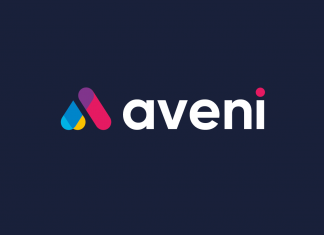Quality assurance is a critical aspect of managing risk in the financial services space. However, with evolving regulatory requirements, manual QA isn’t cutting it anymore.
Manual QA often has low levels of efficiency, coverage and accuracy, and limited ability to surface actionable insights or share the data across a company.
In a recent post by Aveni, the company outlined how with manual QA not being able to meet modern challenges, auto QA is now getting its time.
Aveni said, “Using AI to monitor and assess all customer interactions and QA metrics can put you ahead of the game by flagging potential risks, supporting regulatory compliance, identifying areas for improvement and essentially drawing insights to drive business improvements.”
How can Auto QA help a company’s risk functions? First of all, it helps with greater risk oversight. Aveni stated, “Typical QA processes can be pretty hit or miss. They usually only look at a tiny fraction of customer interactions, maybe just 1%, and hope that it gives a good picture of the overall situation. Based on this approach, the QA process is only as good as the number of calls reviewed.”
Auto QA is able to automatically assess and monitor all consumer interactions, thereby driving a higher level of risk oversight.
It can also analyse large volumes of calls quickly and accurately, providing companies with valuable insights. This technology monitors risks like customer vulnerability, complaints, expressions of dissatisfaction, etc and even bespoke insights from your own QA process.
It allows for comprehensive testing by automatically running QA checks on every call, eliminating the potential for inaccuracies caused by only testing a small sample. This results in higher risk oversight and coverage.
Auto QA also optimises human efforts. Often, manual QA is about having humans doing burdensome and inefficient work. Auto QA, however, can help flag any risky or important calls for a human to take a closer look at.
This, Aveni claims, helps the compliance team to focus on the important stuff and not waste their time manually reviewing every single call. It is more efficient and makes their job easier. It will also save firms from hiring more people to get the level of coverage they need for regulatory compliance.
Auto QA can also serve as an AI-driven machine assessment across a firm’s three lines of defence, improving the quality of risk management practice, ensuring compliance and overcoming the limitations of manual QA.
Aveni said, “A Machine Line of Defence, such as Aveni Detect, mitigates against a range of risks and puts data-driven technology at the heart of their operating model, helping firms understand and improve their customer outcomes.
“The Machine Line of Defence uses AI and Natural Language Processing (NLP) to sort through information for all three lines of defence and make sure the important stuff gets attention first. That way, the focus stays on making customers happy and improving their experiences.
“For the first line of defence, the Machine Line of Defence is the perfect tool for managers who want to find out how their agents are doing. It helps make sure calls are handled properly and feedback is recorded right.
“For the second line of defence, the Quality Assurance team, the Machine Line of Defence acts like a second pair of eyes, checking all calls to make sure they meet the company’s standards. If anything’s off, it flags it right away.
“As for the third line of defence, Trends and Thematic Reviews, the Machine Line of Defence pulls everything together and gives you a big picture of what’s going on. It looks at trends, team behaviours, customer satisfaction, and all sorts of important metrics, so you can see what’s working and what’s not. And all of this helps with transparency and understanding customer outcomes, so you can always make improvements and stay compliant.”
Auto QA, Aveni claims, is able to fuse all these capabilities in one, automating the whole process, improving the effectiveness of their three lines of defence which essentially reduces risks and supports compliance.
Lastly, Auto QA helps with metric driven assessments. Aveni explained, “With auto QA, gone are the days of broad QA questions that don’t lead to much insight. Instead, they are replaced with metric-based questions that get right to the heart of the matter.
“Instead of asking “Did the agent deliver a smooth conversation?” The questions are: How many times did the agent interrupt? How many words per minute did they use? How often did they use filler words? How many leading questions did they ask? It even checks the sentiment of the call based on specific parameters. The best part? These metric-driven questions can be applied to every single customer call. This means more accurate, measurable, and actionable insights for the QA team to work with.
“Managers can now objectively measure things like pace, clarity, interruptions, holds, etc. for their agents, leading to improved consistency in customer service. They can even use the information gathered to plan tailored coaching sessions for their team.
“Auto QA provides higher risk oversight, optimises human efforts, serves as a machine line of defence, and is metric driven, leading to improved risk management, better regulatory compliance, and more actionable insights for business improvement.”
Read the full story here.
Copyright © 2023 FinTech Global











